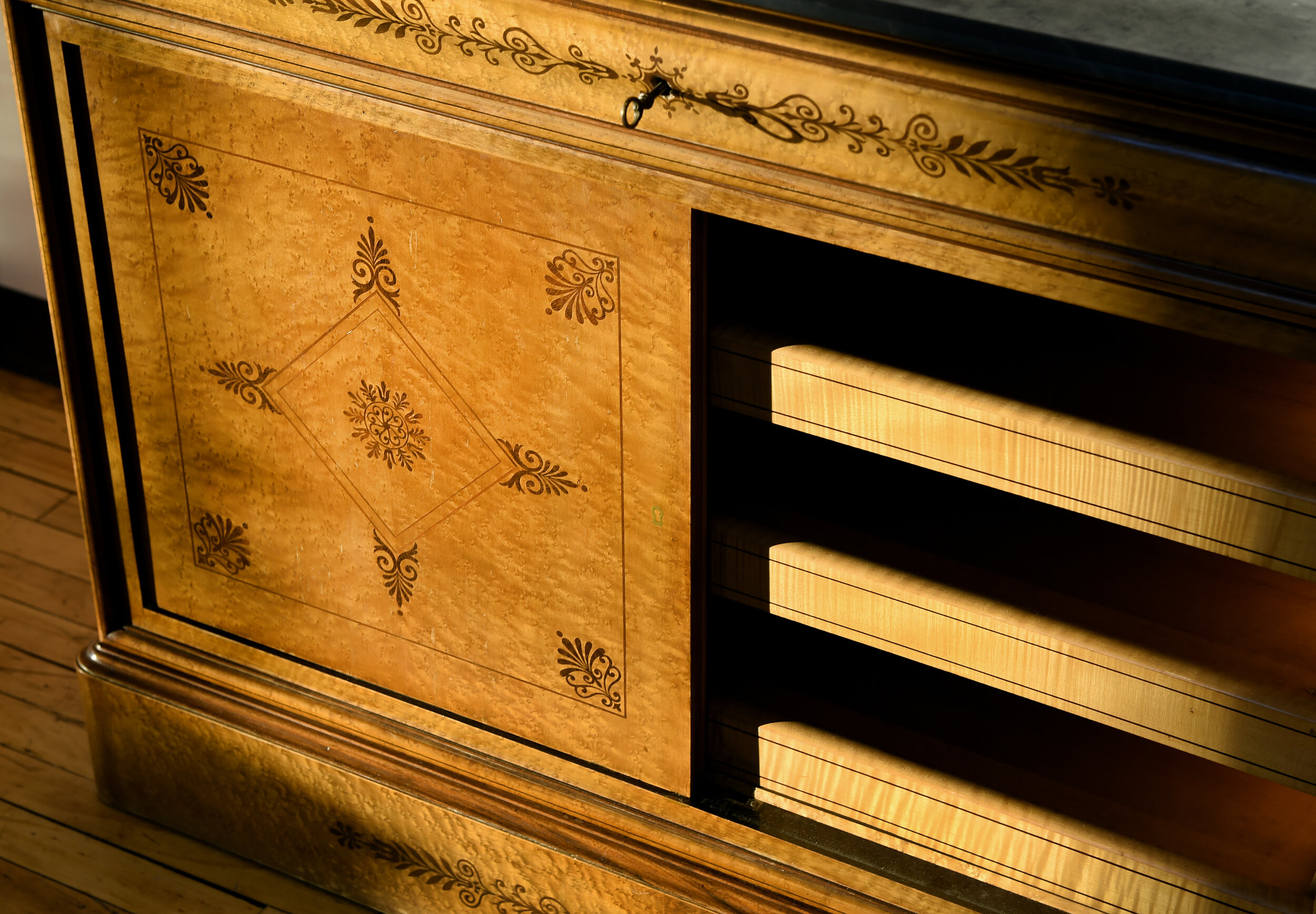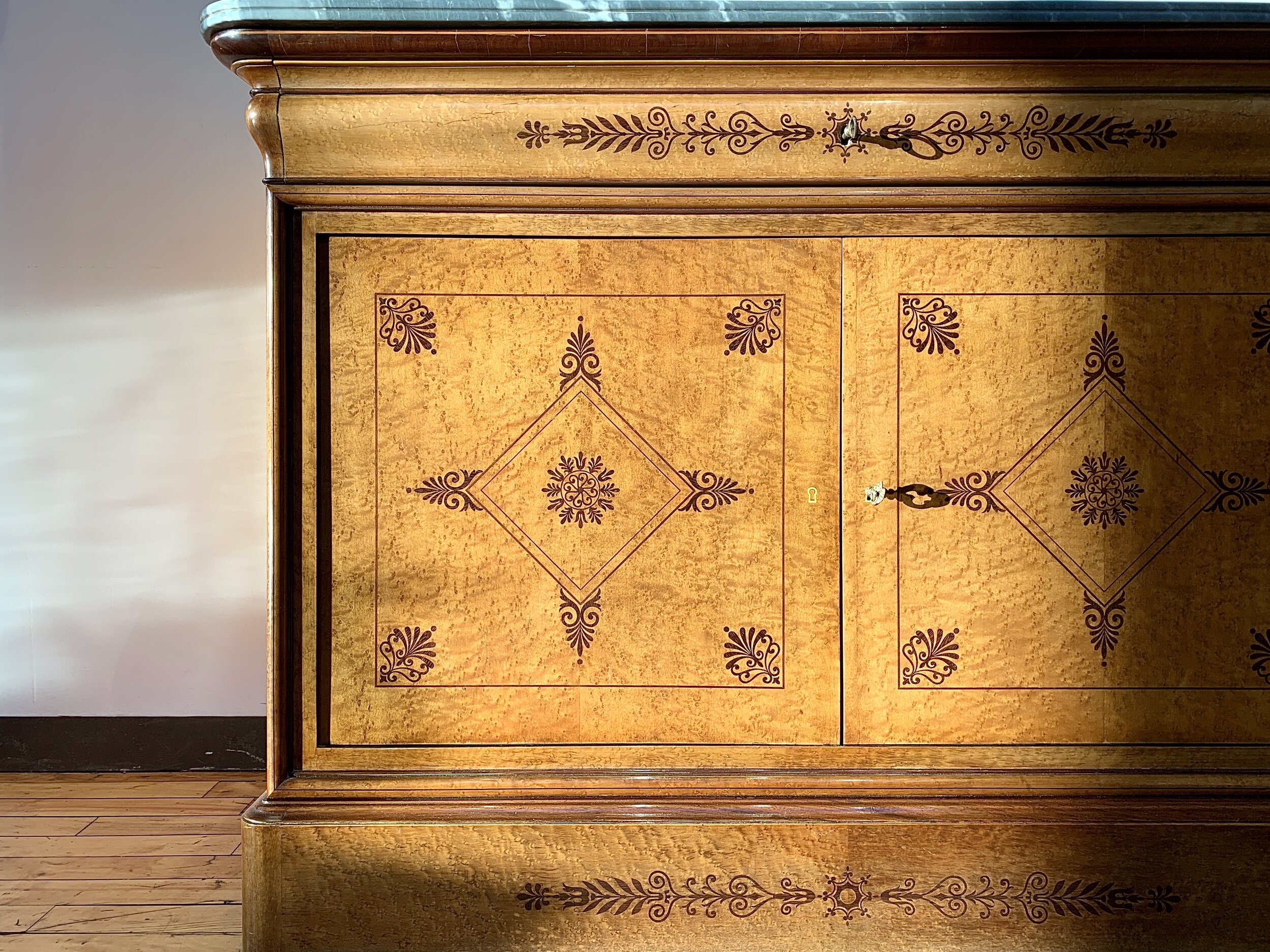Charles X Commode à Vantaux circa 1825 (SOLD)
A very fine commode or chest of drawers in mottled maple with fine incrustations of amaranth wood. (Drawers hidden by two doors or “vantaux” making this an exceptional variety of commode).
The Charles X style is the most refined in the post-Renaissance/pre-industrial timeline of the French decorative arts (1600-1840). The style emerges as a reaction and an evolution of the aesthetics of the Napoleonic Empire. It is generally considered to span the decade of 1820-30~, and in terms of quality of execution, it represents an apex of centuries of artistry in master furniture making.
The finesse of the palmettes inlaid into the doors are a testament to why the Charles X period is remembered as the highpoint of the art of marquetry in period furniture history. On this commode, the inlaid decor is highly symmetrical and very academic in its interpretation and reuse of motifs from the ancient Graeco-Roman decorative repertoire.
The use of a light wood background for inlay (maple) is associated with the earlier Charles X period 1820-25. The wood scheme was more often inverted during the second portion of the decade (dark wood with light inlay). The form of this commode, however, particularly the bulbous curve of the corner moldings just below the grey marble, point towards manufacture circa 1825-30. In any case, a piece as fine as this is certainly the work of one of the major Parisian makers of the day, such as Louis Lemarchand, who were often no longer stamping their work (as the obligation to do so had long since been abolished).
With regard to the previous Empire style, the Charles X style gains in elegance what it loses in majesty. The birds eye maple, used here as the main blond colored wood, highlights the fall of the Napoleonic Empire (much Empire work was made in Cuban Mahogany which in a way advertised the scope and power of the regime). Maple, an indigeonous French wood, was a luxurious subtle choice for a humbled country recovering from decades of wars. Finally, this style is as rare as it is exquisite. It lasted no longer than a decade, and the typical luxury clientele was less affluent than usual and even less prone to overt displays of wealth.
H: 36 in. L: 49 in. D: 22.5 in.
Myers & Monroe, LLC



